- Mapo Tofu:
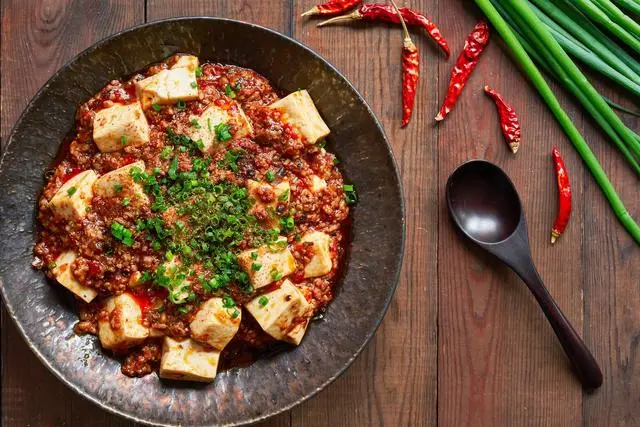
- Main Ingredients and Cooking Method: This dish primarily consists of tofu paired with ingredients like minced beef (or pork), chili peppers, and Sichuan peppercorns. It’s prepared by cooking tofu and then stir-frying it with the other ingredients.
- Taste and Texture: Known for its spicy and numbing characteristics, the sensation from Sichuan peppercorns combined with the chili creates a unique taste. The tofu is silky-smooth, complementing the spiciness and offering a rich layered experience.
- Cultural Significance: A traditional Sichuan dish, Mapo Tofu embodies the spicy essence of Sichuan cuisine. Widely consumed in Sichuan, its fame has also spread internationally.
- Popularity and Influence: Mapo Tofu is celebrated worldwide, with a strong presence in countries like the USA, Canada, the UK, France, Vietnam, Singapore, Malaysia, Japan, and Australia.
- Twice-Cooked Pork:
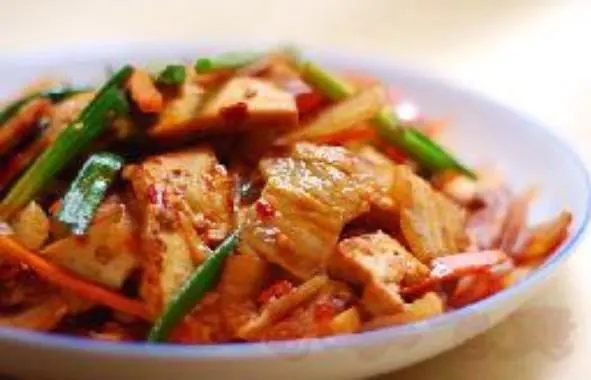
- Main Ingredients and Cooking Method: Primarily made from pork, green peppers, and garlic sprouts. The pork is first deep-fried then stir-fried with the other ingredients.
- Taste and Texture: The dish is vibrant in color, rich without being greasy, and has a deep aroma. The fried pork is crunchy, complemented by the crispness of green peppers and garlic sprouts.
- Cultural Significance: Originating from rural Sichuan, it’s considered the pinnacle of Sichuan cuisine, representing its distinct flavor. It holds a significant place in Sichuan dishes and is widely prepared and consumed.
- Popularity and Influence: As an emblematic dish of Sichuan cuisine, it’s highly regarded. In Sichuan, almost every household can prepare this dish, indicating its integral role in local culinary culture.
- Husband and Wife Lung Slices:
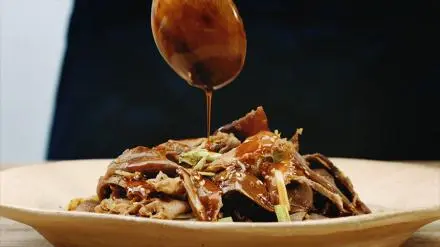
- Main Ingredients and Cooking Method: Main ingredients include beef skin, heart, tongue, stomach, and beef, all sliced post-braising. It’s seasoned with chili oil and Sichuan peppercorn powder.
- Taste and Texture: The dish presents a shiny red hue, soft texture, and a spicy-numbing flavor. The slices have a tender and melt-in-the-mouth quality.
- Cultural Significance: A renowned dish from Chengdu, it was created by the couple Guo Zhaohua and Zhang Tianzheng, thus the name. It embodies the spicy flavor of Sichuan cuisine and its innovative spirit.
- Popularity and Influence: Highly reputed in Sichuan and beyond, it stands as a flagship dish for Sichuan cuisine, beloved by many. Its appeal is also growing on the international stage, becoming a significant representation of Chinese cuisine.
- Sichuan Kung Pao Chicken:
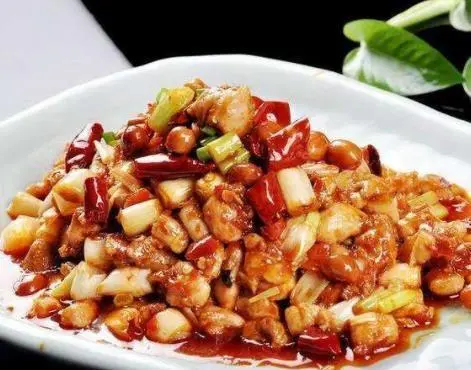
- Main Ingredients and Cooking Method: This dish uses chicken breast, crispy peanuts, and dried chili segments. The chicken is diced and stir-fried with the peanuts and chili, and finally, seasoned with sauce.
- Taste and Texture: The dish features a spicy-numbing taste with a crunchy texture. The chilies, when fried, add a smoky spiciness, blending perfectly with the crispy chicken and peanuts.
- Cultural Significance: Originally from the Qing Dynasty official Ding Baozhen in Shandong, it was later introduced and adapted in Chengdu, Sichuan. Seen as a royal dish, it showcases the uniqueness and innovation of Sichuan cuisine.
- Popularity and Influence: As a conventional delicacy, it’s highly recognized. Widely consumed in Sichuan, it’s also offered in Chinese restaurants worldwide, marking its global influence.
- Mao Cai:
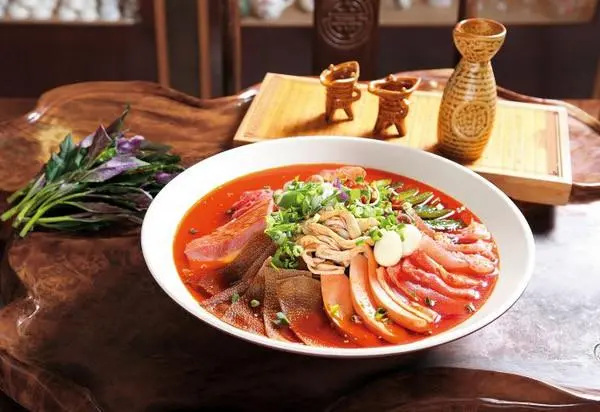
- Main Ingredients and Cooking Method: A combination of meat, tofu products, greens, seafood, and mushrooms. Ingredients are chopped, cooked, and then consumed with spices such as chili powder, salt, and MSG.
- Taste and Texture: Boasting a spicy-numbing flavor, Mao Cai retains the original taste of the ingredients, with spices enhancing the overall richness.
- Cultural Significance: Originating from Chengdu, it’s a traditional snack that encapsulates the essence of Sichuan. Known for its affordability and aromatic taste, it represents the distinct flavor and culture of the region.
- Popularity and Influence: Extremely popular in Sichuan, it stands as one of the favorite local snacks. Its unique taste and method of consumption have made it an important representative of Chinese culinary culture, both domestically and internationally.
- Bai Cai in Broth (Kaishui Baicai):
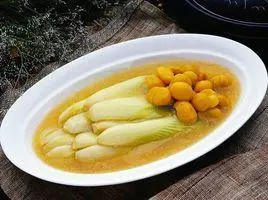
- Main Ingredients and Cooking Method: Primarily uses the core of the large northern Chinese cabbage, complemented with chicken broth. The cabbage core is cooked and then poured over with chicken broth and a sprinkle of chicken oil.
- Taste and Texture: This dish offers a fresh and delicate taste, rich aroma, and hearty broth, ensuring it’s not greasy and remains refreshingly aromatic.
- Cultural Significance: Initially crafted by Qing Dynasty’s Imperial Kitchen chef Huang Jinglin and later popularized by Sichuan cuisine master Luo Guorong. It became a staple in state banquets, showcasing the finesse and distinct flavor of Sichuan dishes.
- Popularity and Influence: As a celebrated Sichuan dish, it has notable prominence and impact domestically. Being a representative dish, it’s widely prepared and revered in Sichuan.
- Braised Pork with Rice Wine Lees:
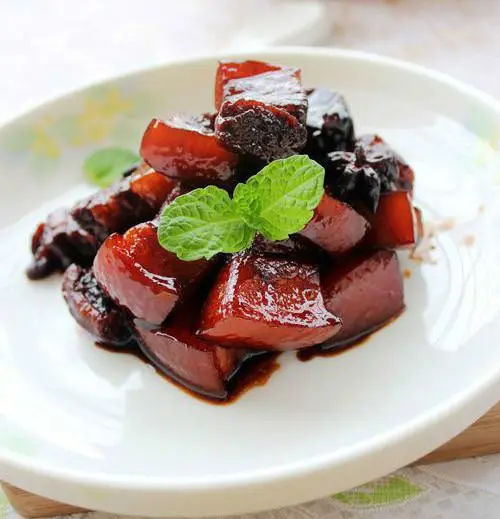
- Main Ingredients and Cooking Method: Primarily made from pork belly, it’s cooked with rice wine lees and ginseng soup, resulting in a radiant red hue, tender meat, and a plump texture.
- Taste and Texture: The dish possesses a deep, rich flavor with a distinct aroma from the rice wine lees. It combines the meat’s richness without being overly fatty.
- Cultural Significance: A unique gem in Sichuan cuisine, it showcases the exclusive braising techniques and flavors of Sichuan dishes.
- Popularity and Influence: A special Sichuan dish, it enjoys considerable fame and influence in the region. It’s one of the highly esteemed dishes, cherished by locals.
- Sweet Braised Pork (Tian Shao Bai):
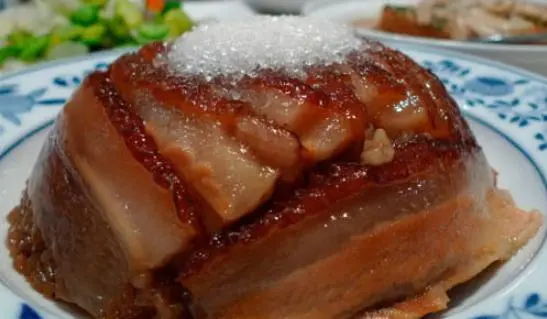
- Main Ingredients and Cooking Method: Composed of pork belly, glutinous rice, and bean paste. The bean paste is sandwiched between slices of pork, which are then steamed until tender.
- Taste and Texture: This dish provides a savory-sweet and glutinous experience, characterized by its glossy red appearance and a balance of salty and sweet flavors. The texture is sumptuous yet not oily.
- Cultural Significance: One of the traditional dishes of Sichuan, it exhibits the unique culinary craftsmanship and flavors of the province.
- Popularity and Influence: Recognized as one of the “Nine Big Bowls” of Sichuan, it holds a distinct reputation and influence. It remains a beloved traditional dish among locals.
- Rongcheng Chicken Tofu:
- Main Ingredients and Cooking Method: Predominantly made from chicken and tofu. The dish is designed to simulate a meaty flavor using vegetarian ingredients.
- Taste and Texture: The dish emphasizes a mellow and rich taste, portraying the light and subtle features of Sichuan dishes. Its texture is delicate with a unique flavor.
- Cultural Significance: A traditional specialty of the Sichuan region with a history spanning over a century. As a masterpiece of Sichuan cuisine, it epitomizes the refined culinary techniques and traditions of the province.
- Popularity and Influence: Known within the Sichuan region, it plays a significant role in the local culinary culture, resonating with many.
- Bo Bo Chicken:
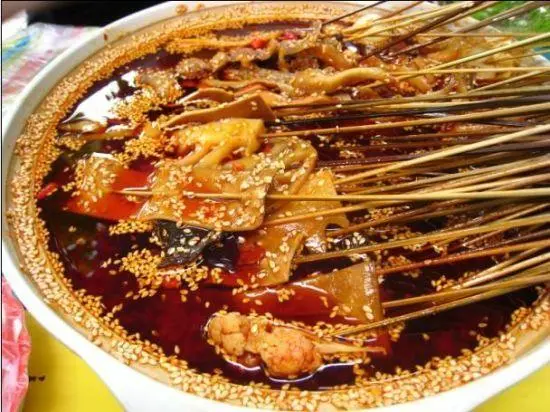
- Main Ingredients and Cooking Method: Boneless chicken slices constitute the primary ingredient, complemented by various seasonings and a predominantly spicy-numbing sauce. The chicken is mixed with the seasoning and placed in ceramic bowls.
- Taste and Texture: The dish’s hallmark is its crispy skin and tender meat, combined with a spicy-numbing flavor and a balanced sweet-salty taste.
- Cultural Significance: A traditional snack of Leshan and Chengdu with a history dating back centuries. It forms a part of the region’s snack culture, underscoring the culinary heritage of the locale.
- Popularity and Influence: As a conventional snack, it enjoys significant fame and influence in Leshan and Chengdu. It’s deemed one of Chengdu’s top-quality snacks, treasured by locals and tourists alike.